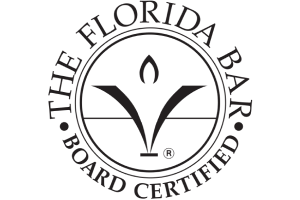The Effects on Voting Laws after the Shelby v Holder Supreme Court Ruling – 5
Supreme Court Oral Argument Highlights and Excerpts (continued)
Rein thanked Justice Breyer and continued the attempt to make his case while addressing further statements and questions posed by Justices Ginsburg, Sotomayor and Kagan.
Justice Scalia then rang in commenting on his belief that Congress most likely believed the circumstances and violations were more apparent than before the 2006 extension due to the fact that their vote for extension increased from its original tally of 79-18 to a perfect 98-0 in that year, and then went on to say that he thought that it would have been further apparent than if the Constitution was being violated by those states. He then questioned Attorney Rein if he believed that to be true.
Mr. Rein began to answer initiating his opinion when Justice Kagan interrupted by speaking to Justice Scalia, concurring with his statement and stating that she believed the argument had basis referencing the ninety-eight voting Senators which included those from covered states, evidencing that the necessity for that part of the law was still required.
Justice Scalia then continued by questioning his own statement mentioning that possibly the Senators believed that they shouldn’t vote against the legislation citing that it wasn’t in their interest to do.
Justice Breyer then entered the exchange by explaining that he couldn’t know what the lawmakers were thinking but felt it was logical to believe that it was an old problem, comparing it to a disease, which had gotten much better but still existed and if there was a remedy in place why should the usage of it be removed. Mr. Rein tried to counter the Justice’s remarks but Breyer continued by saying that “would you not at least say that a person who wants to keep that remedy, which has worked for that old disease which is not yet dead, let’s keep it going; is that an irrational decision?”
Rein was finally allowed to speak and stated that he thought that was “a hypothetical that doesn’t address what happened, because what happened is the old disease, limiting people’s right to register and vote”.
Before Mr. Rein could finish his thought Justice Breyer interjected stating the original problem (disease) was discrimination as described under the Constitution’s Fifteenth Amendment which slashes an individual’s right to vote due to their race or color.
But Congress’s focus in 1965 was on voting and registration, said Rein. He also referred to the Katzenbach decision in 1964.
Justice Sotomayor broke in to state that it was also about voter dilution making an effort to point out that it had already advanced from the original reason, or at the least had begun to. But Rein was quick to challenge her remark saying that the Court had never come to a decision that dilution was directed by the Fifteenth Amendment. He also said that this was the case under the Fourteenth Amendment but the original initiation of the principal was by way of the Fifteenth.
Justice Kagan then emphasized the point by stating that the actual wording in the Amendment was “denial and abridgement” and then posed the question of what difference; except for the expression of vocabulary would the word abridgement have from the word dilution?
Mr. Rein answered this by saying that he thought that dilution was a different symptom and used an example of dividing unconnected rules for voting in one election but not another; comparable to a primary in contrast to a separate election and went on to surmise that he thought “abridgement can be done in many ways” completing the thought saying his belief was that dilution is not the same idea.
A key point was then raised by Justice Roberts detailing what the government said toward the end of their brief. He inserted that it appears “It’s rather proud of this **reverse engineering: We really knew it was some specific States we were interested in, and so we used these old categories to cover that State.” He then asked Mr. Rein if he thought that is “a methodology that in your view is appropriate under the test of congruence and… proportionality?” Mr. Rein responded to the negative and went on to elaborate his view on the issue.
** The current administration believed the formula initially was reverse-engineered to consist of the geographic locations that Congress wanted covered in 2006. Legislators basically left the formula as it was so the same jurisdictions would remain covered, as argued by the administration.
Mr. Rein then continued his arguments with statements and questions posed by Justices Sotomayor, Kagan, Kennedy, Scalia and Ginsburg concluding that the methods thus used solving the issue was equivalent to “killing a fly with a sledgehammer,” explaining it as “a fair question because when you start to invade core functions of the States… a great deal of caution and care is required”, and continued by saying “So I think that the rational basis test, the *McCulloch test still applies to delegated powers… because we believe that if you examine it under *McCullough, just as they did in Katzenbach, it would fail as well.” He was then thanked by the Court upon conclusion.
* The “McCulloch test” necessitates the court to accede to Congress concerning which procedures are needed to accomplish legitimate ends, as long as those methods do not outweigh recognized constitutional margins among the divisions of government or amid government and individuals, established in McCulloch v. Maryland.
Next: Supreme Court Oral Argument Highlights and Excerpts, (continued) Click here to go to page 6




